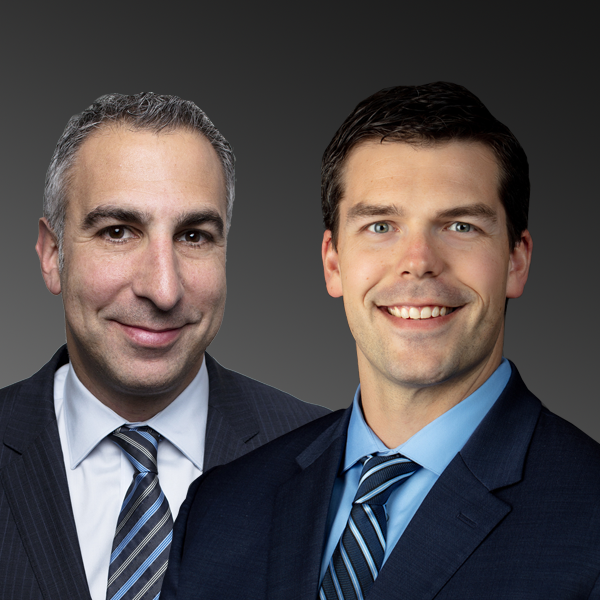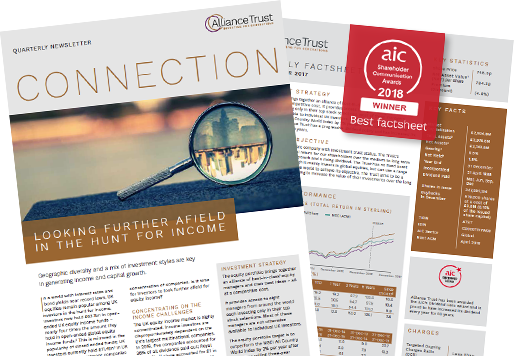We have all become very used to the principles of investing in a low-inflation, low-interest, low-growth world over the past decade or so. Cash savings are largely redundant; most bonds and ‘bond proxy’ shares offer poor value; equities have rewarded, lumpily, though the strongest parts of the market are now very expensive; and alternative assets have come into their own.
But the past strange year has introduced, among many other unexpected trends, significant increases in the cost of living. UK consumer price index (CPI) inflation for the 12 months to October was the highest for a decade and ahead of economists’ expectations at 4.2%[1], while in the US it hit 6.2%, a 31-year high[2].
The question is partly whether inflation is primarily a matter of supply-side shortages that will resolve themselves over time, or is rooted in ‘stickier’ problems, such as soaring energy prices as fossil fuel production is cut back to meet net zero goals.
Conventionally, when inflation rises it’s a sign of the economy heating up, so interest rates are hiked by central banks to dampen consumer spending and boost saving. But this time, with the UK economy (among many others) still in a relatively precarious position in the aftermath of Covid lockdowns, the Bank of England may be reluctant to risk damaging its fragile recovery and more inclined to allow inflation to ‘run hot’ for a while.
As Russ Mould, investment director at AJ Bell, explains, the choice for central bankers is a stark one. Tighten policy too quickly to nip inflation in the bud, and the economy could slow or tip into recession, pushing up unemployment; tighten too slowly, and inflation continues to erode real spending power, particularly for the least affluent.
”Policymakers, and therefore financial markets, do seem to be at a potential tipping point, especially as there are multiple possible outcomes,” Mould says. “Western central banks seem as frightened of financial market turmoil as they do of unemployment and inflation, presumably in the view that a plunge in asset values would actually have a marked impact on consumer confidence and the wider economy.”[3]
The Bank’s latest Monetary Policy Report certainly suggests it is reluctant to administer the old medicine in anything but tiny spoonfuls. It forecasts a gradual rise from the current 0.1% base rate to 0.25% by the end of this year and 1% by the end of 2022[4]. But it came out before the October inflation figures, which are likely to ramp up pressure for more meaningful rate movements.
Central bankers are not the only worried ones. Consumers are wondering what this changing but deeply uncertain macroeconomic backdrop could mean for them and their finances too. “The 100% plus increase in google searches for ‘transitory inflation’ and ‘stagflation’ gets very much to the heart of what markets and investors have been grappling with in 2021,” observes Rory McPherson, head of investment strategy at Punter Southall Wealth[5].
The difficulty for investors is that higher interest rates tend to spell trouble for both bonds (because cash becomes more competitive) and equities (because corporate borrowing becomes more expensive). “This would likely sound the death knell for traditional “balanced” global equity and fixed-interest portfolios,” adds McPherson.
Not only are government and corporate bonds down this year because of their vulnerability to interest rate rises (which have begun to be priced in by the market), but also “a big concentration risk” has emerged within equity markets as the US tech giants have continued to outperform. He therefore views a traditional, benchmark-focused approach as being “embedded with high risk”.
Overall, it seems, the consensus among the experts is that attempting to run a portfolio by second-guessing short-term economic outcomes and market responses is a particularly bad idea at such a time of uncertainty. Instead, holding a broad spread of assets and investment styles that will cover all eventualities is one method to construct a robust, reliable portfolio.
Ben Yearsley, investment director at Fairview Investing, puts it neatly: “What you don’t want is all your investments pointing in the same direction, so that one external factor such as rising or falling interest rates could determine how your portfolio performs. Because the outlook is mixed, with lots of different factors to consider, it’s even more important not to have everything pointed the same way.”[6]
Equities
Mould makes the point that while none of us know what’s down the line for us, we do know what markets are pricing in.
"Equities (‘paper assets’) have outperformed commodities (‘real assets’) hands down for a decade, with growth and tech stocks leading the way,” he comments. “That implies markets still have faith in central banks, see the current inflationary spike as transitory, and believe the formula for the last decade will remain the same in the next one, whereby inflation remains benign and unemployment low.”
But as mentioned, equity markets have become increasingly skewed. Says McPherson: “The US is now about 68% of the global index, with the biggest five stocks making up about 15% of the global index: this is a bigger proportion of the global index than the next four biggest countries after the US combined!”
Against that, these tech, biotech and social media growth stocks are considered capable of earnings growth almost regardless of the macroeconomic backdrop and investors would likely prize them if deflation or disinflation took hold. That may seem unlikely right now, but as Mould observes, it could happen over time if automation continues to reduce the need for manual workers and the likelihood of rising wages, and supply-side bottlenecks ease.
However, there’s much better value to be found in markets beyond the US, notably in the UK, but also in some emerging markets. Peter Mcgahan, chief executive of Truro-based Worldwide Financial Planning, points out: “Small- to mid-cap UK equities are abundant with takeovers right now, and an obvious choice for upside.”[7]
In general, the current ‘valuation gap’ between growth and value stocks is one of the widest ever, adds Yearsley, and at some point it’s likely to flip. “However, the obvious question is what the catalyst will be. Will it be rising rates? Or simply investors getting fed up with sky-high growth stock prices?"
Value stocks certainly become an obvious choice if inflation does kick in, explains Mould, because investors can buy undervalued stocks that provide ‘jam today’, with earnings growth and cash-flow growth as prices rise. In contrast, he adds, “the long-term growth stocks which have done so well for so long offer jam tomorrow at much higher multiples.”
Fixed interest
In an inflationary environment, it becomes harder to justify the presence of either government or corporate bonds in a balanced portfolio.
McPherson points out that even inflation-linked government bonds don’t provide the protection they appear to promise. Not only are they extremely expensive but they’re also so long-dated that real returns could be negative in an inflationary world. However, Punter Southall does make use of short-dated inflation linked bonds, which focus mainly on the “shorter-term, breakeven parts of the US curve” rather than the pricier UK.
Yearsley takes a relatively hardline view. “If you are a long-term investor looking at 10 years or more, then I see little need to have many bonds, if any, in your portfolio. I’m not sure you need the diversification of bonds if you can ride out shorter-term volatility.
“In times of stress, and even at current levels, government bonds could well provide the robustness portfolios need; but if there is no stress in wider markets and rates do gradually rise, they can be an expensive asset to hold.”
However, Russ Mould suggests that fixed income, though it has little appeal in the face of current inflation, would come into its own – alongside the likes of high-growth stocks – in the event of deflation or disinflation.
“If prices start falling, even the current modest (or even negative nominal) returns from bonds would look appealing, given the capital preservation they would offer,” he explains. “Plus, in the case of deflation, the odds on central banks returning to aggressive Quantitative Easing (QE) and zero interest rate policies (ZIRP) policies must be good.”
Alternative assets
Mcgahan is also dismissive of bonds. Instead, he argues, it makes sense to turn to other assets with a low correlation to equity markets. “Hedge funds which pay out when volatility hits but are otherwise benign, student property funds, mid-market property in Europe are all assets to provide a non-correlated smoothing,” he adds.
Against rising prices McPherson favours gold miners and commodities, which tend to do well as inflation bites: he points out that his portfolio’s commodities investment is up 30% this year.
Additionally, two clear and powerful drivers for parts of the alternatives universe have emerged over the past couple of years. The drive towards net zero carbon emissions is set to shape our world profoundly - and provide huge potential in the shape of renewable energy infrastructure and other environmental initiatives. Human healthcare has also been highlighted by the covid pandemic, and McPherson suggests exposure to a dedicated healthcare fund makes investment sense.
Cash
We all need to keep a chunk of cash for emergencies, but there’s no incentive to keep more these days, given that bank savings, like bonds, lose real value as living costs rise. As Anna Bowes, co-founder of SavingsChampion.co.uk, points out, there is nothing available that will keep up with inflation at 4.2%, “so savers’ cash is being decimated due to the toxic combination of low interest rates and higher inflation”.[8]
She adds that although rates have been rising recently, even the best five-year bonds are paying only 2.05% a year, and “many savers are likely to feel uncomfortable about tying their money up for this long with the prospect of a base rate rise becoming ever more likely”.
Against that, fixed term bond rates are often priced with the market expectations of a base rate movement included. “Even if the base rate rises over the next few months, savings rates may not rise in line, especially fixed term accounts. I’m afraid we will just have to wait and see.”
While one route for investors to cover all bases in uncertain times is to mix and match a genuinely diverse range of assets into their own portfolio, there are easier routes for investors with longer term time horizons and the ability to weather some shorter term volatility.
The principle of a broad mix of different flavours of equities is central to the Alliance Trust multimanager approach. The investment manager, Willis Towers Watson, largely disregards macroeconomic factors and instead aims to create a complementary combination of specialist managers who are then given the freedom to run their own concentrated portfolio of best ideas.
Of course, some sub-managers will have a tougher time than others as different styles, sector or regional exposures shift in and out of favour. But the overall portfolio is not taking any significant macros tilts, and at a time like this, when the economic situation might stay pretty much as it has for the past decade or might be at a significant tipping point, Alliance Trust investors can take comfort from the fact that all their investments will never be “pointing in the same direction”.
Past performance is not a reliable indicator of future returns. This material contains the opinions of the manager and other external investors and such opinions are subject to change without notice. Forecasts, estimates and certain information contained herein should not be considered as investment advice or a recommendation of any particular security, strategy or investment product. Information contained herein has been obtained from sources believed to be reliable, but not guaranteed.
TWIM is the appointed Alternative Investment Fund Manager of Alliance Trust plc. Alliance Trust plc is a listed UK investment trust and is not authorised and regulated by the Financial Conduct Authority.
Read more investment expertise






